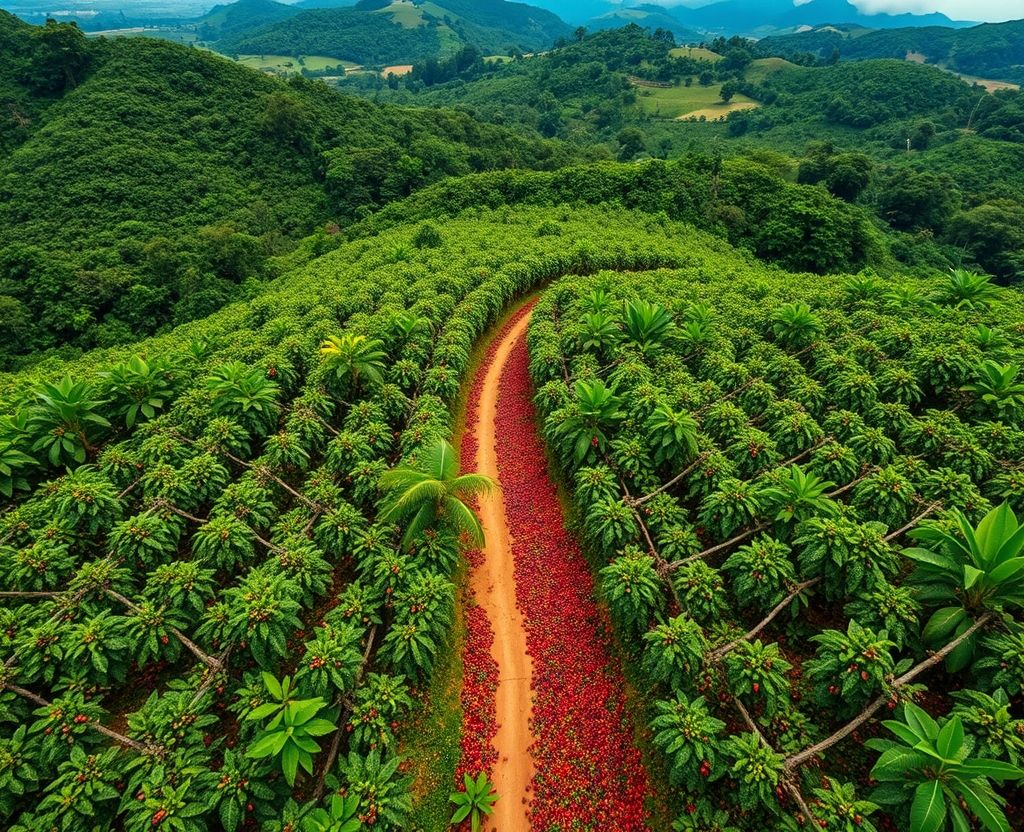Coffee prices remain under pressure as Brazil’s ongoing harvest and global production forecasts point to abundant supply in the 2025/26 season.
On Thursday, September arabica coffee futures (KCU25) declined by 1.60 cents (-0.55%), while September robusta futures (RMU25) rose by $25 (+0.69%), closing the day mixed. Arabica prices fell to a contract low on Wednesday, and the nearest July futures dropped to their lowest point in 7.5 months. Robusta futures had also hit a 1.25-year low last week.
Brazil’s advancing harvest is a major factor. Cooxupé, the country’s largest coffee cooperative and top exporter, reported that its harvest was 31% complete as of June 27 — down from 42% at the same time last year. Meanwhile, dry weather forecasts in key coffee regions are expected to accelerate harvesting activities.
Safras & Mercado provided a broader view, stating that Brazil’s total 2025/26 harvest was 35% complete by June 11 — nearly aligned with the 5-year average, although slightly behind last year’s 37%. Robusta harvesting was 49% complete, while arabica was at 26%, delayed by heavy rainfall in some regions.
Recent rainfall in Minas Gerais — Brazil’s primary arabica-growing state — further pressured prices. Meteorological agency Somar reported 5 mm of rain during the week ending June 28, which is 714% of the historical average for that period, easing drought concerns and benefiting crop development.
On the global front, forecasts continue to weigh on prices. The USDA’s Foreign Agricultural Service (FAS) projects Brazil’s 2025/26 coffee output will rise slightly by 0.5% year-over-year to 65 million bags. Vietnam — the leading robusta producer — is expected to grow its output by 6.9% to a four-year high of 31 million bags.
However, robusta prices have some support. ICE-monitored robusta inventories fell to a six-week low of 5,108 lots last week, before slightly rebounding to 5,153 lots. On the other hand, arabica inventories are trending higher — reaching a 4.75-month high of 892,468 bags in late May and settling at 842,223 bags by last Thursday.
Meanwhile, Brazilian green coffee exports dropped by 36% in May compared to the previous year, totaling 2.8 million bags, according to Cecafé — a bullish sign for prices in the short term.
In Vietnam, the situation is more mixed. The 2023/24 crop dropped by 20% due to drought, down to 1.472 million metric tons — the smallest in four years. Export data also shows contraction: 2024 shipments fell by 17.1% year-over-year, and exports from January to May 2025 were down 1.8% to 813,000 metric tons. The Vietnam Coffee and Cocoa Association has revised its 2024/25 production forecast down to 26.5 million bags.
Despite regional declines, the USDA’s global report remains bearish. The FAS expects world coffee production in 2025/26 to reach a record 178.68 million bags — a 2.5% increase from the previous year. Arabica output is expected to fall by 1.7% to 97.022 million bags, while robusta is forecasted to grow by 7.9% to 81.658 million bags. Ending stocks are projected to rise by 4.9% to 22.819 million bags.
Volcafe, however, forecasts a global arabica supply deficit of 8.5 million bags for 2025/26 — larger than the 5.5 million bag shortfall projected for 2024/25. If confirmed, it would mark the fifth consecutive annual deficit for arabica coffee, signaling long-term supply strain despite current price softness.
